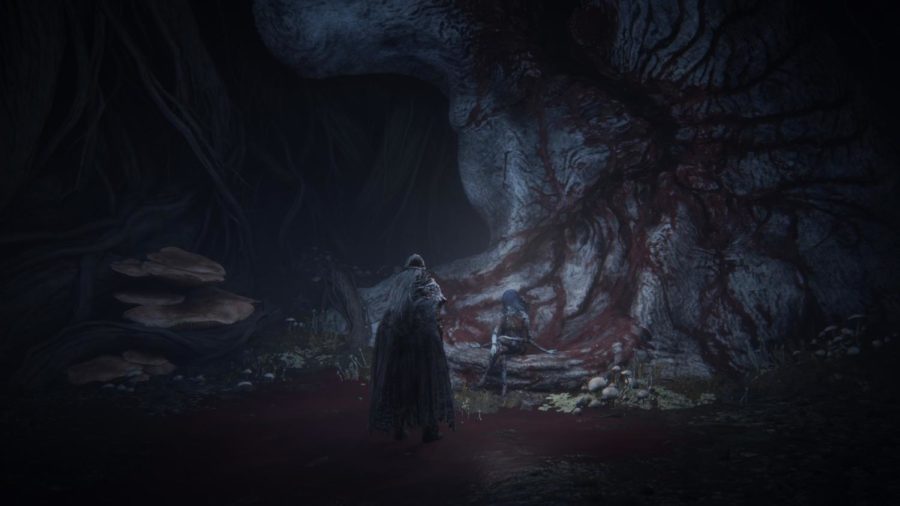Depth of world, lore in Elden Ring lives up to fans’ expectations
The player visits Ranni, one of the many non-playable characters in the game, in a secret area to end her questline and unlock one of the multiple endings players can find throughout the game. The extent FromSoftware has gone to make areas that might never be found by players is a major pro to the game as it makes players’ experiences with the game unique.
April 26, 2022
A world of giants, dragons and demigods all stand in the way of the Tarnished, the player who seeks to restore the Elden Ring.
Announced on June 12, 2019, Elden Ring won eight awards including Most Anticipated Game of the Year before its release on Feb. 25. This incredible game had high expectations that it ended up meeting and, in some cases, exceeding.
The Elden Ring is the most powerful object in the world of the game, keeping concepts such as life and death in order and holding the ability to resurrect the main character and most enemies. It also created the Erdtree, which is the area people are attempting to get to by the end of the game in order to restore the Elden Ring after it shattered by becoming a vessel for it. The player is not forced to do this as there are at least six different endings, based on which non-player character (NPC) quests the player completes by the end of the story.
Although Elden Ring’s appeal comes from its gameplay, the story is also important. The way the developers, FromSoftware, tell the story through item descriptions instead of giving necessary information directly to people makes the story seem incomplete despite being detailed, which is not a problem, but when they are confused about their own motivation of collecting the shattered pieces of the Elden Ring and fixing it, it affects the overall experience of the game since it seems nonsensical.
Despite the issues with how the story is told, FromSoftware created characters like the blacksmith who starts out as prisoner with no self worth until he finds a protégé who lets him feel like he’s worth something but as the game continues he loses his memory and forgets all about her. Paying close attention to the characters throughout the story adds a more rewarding experience for those who want to be immersed in the world that the creators have built.
Speaking of the world, the map in Elden Ring is massive. Scattered across the map, players can find dungeons, caravans, forts and NPCs that all give useful items that are easy to miss. The game offers different environments on the map, so players can find areas that range from lava to snow in a way that makes sense.
Although the map is filled with enemies the game gives a hub area to take a break where a blacksmith can upgrade weapons. Depending on the weapon, it might take different materials to upgrade it that the player can find around the map, with boss weapons, weapons that the boss uses, having more rare items but requiring fewer upgrades. Another drawback of boss weapons is that the player cannot change its weapon arts, which are unique attacks.
Bosses are enemies that will be significantly more difficult than average enemies and they can be identified by a health bar at the bottom of the screen. These stronger enemies range from fantastic to poorly designed with the major bosses being able to take out over a quarter of the player’s health with one attack, making players use precise dodging and blocking to defeat their opponents.
Other bosses are gimmicks like Rykard who require a specific weapon to defeat him that people will find in the boss room. These gimmick boss fights add more variety to the game, which is important for a game that has the largest open world FromSoftware has created. Despite many of what are supposed to be larger enemies being reused too many times, there are many well-designed bosses to keep the player entertained.
Overall, this game is fantastic in terms of the art design, mechanics, lore, characters and enemies. It brings in new ideas for returning fans of the genre while making the game accessible to new players.



